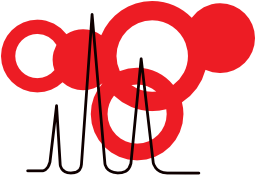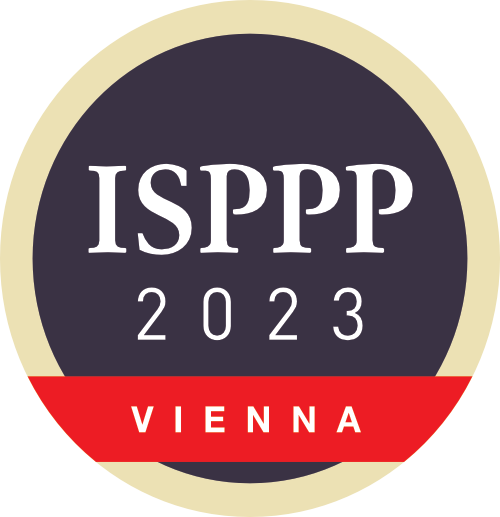Key Note Speakers:
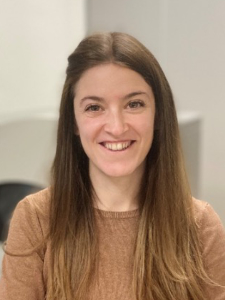
Elena Dominguez Vega
Assistant professor, Leiden University Medical Center (Leiden).
Dr. Elena Dominguez Vega is assistant professor and principal investigator at the Leiden University Medical Center (Leiden). Her research focus on the development of new mass spectrometric methods for the structural and functional characterization of glycoproteins of clinical and pharmaceutical interest. Recent interest focus on multidimensional approaches for method automation and new selective methods for proteoform-specific affinity assessment. Over the years, Dr. Elena Dominguez Vega has closely collaborated with several pharmaceutical companies and has received multiple grants and awards in support to her research. In 2022 she was on the Analytical Scientist Top40-under-40 Power List.
Tentative talk: Probing structure and function of proteoforms by MS-hyphenated separation techniques
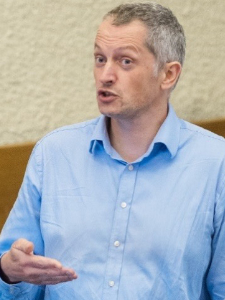
Dan Bracewell
Professor of Bioprocess Analysis, Department of Biochemical Engineering, University College London
Daniel G. Bracewell is Professor of Bioprocess Analysis at the UCL Department of Biochemical Engineering. He has made major contributions to the fundamental understanding of biopharmaceutical purification operations, including collaborations with Thailand, India and the USA. Author of more than 100 peer reviewed journal articles in the area to date and currently supervises 15 doctoral and postdoctoral projects, many of these studies are in collaboration with industry.
Tentative talk: Time-Dependent Sorption Behaviour of Viral Vectors
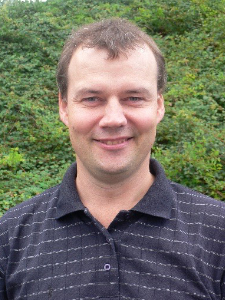
Arne Staby
Scientific VP at CMC Project Planning & Management, Novo Nordisk A/S.
He obtained a Ph.D. in Chemical Engineering from The Technical University of Denmark, Department of Chemical Engineering in 1993, and after finishing his post-doc in 1995, he has been working with development of purification processes for recombinant proteins and peptides at Novo Nordisk A/S, both as scientist, specialist, project manager, and department head.
Current responsibilities include preparation and implementation of strategies within intellectual property rights, trade secrets, life-cycle management, technology development, Quality by Design, and bioethics for development of biopharmaceuticals.
He has published and holds many papers and patents within industrial purification of proteins, and he frequently acts as oral presenter, program chair and session chair at international conferences, and as referee for international journals and in evaluation of Ph.D. theses.
In 2009-2016, he was appointed Adj. Professor in protein purification at Department of Chemical Engineering, Lund University, Sweden. In 2019, he was appointed honorary doctor (Dr.h.c.) in Biotechnology at Lund University, Sweden.
Tentative talk: Latest developments in the implementation of modelling tools in the biopharmaceutical industry
Inivited Speakers:

Dorota Antos
Rzeszow University of Technology, Poland
Dorota Antos holds a position as professor at Rzeszów University of Technology, Poland.
She is a Chair of Department of Chemical Engineering and Processing and a Dean of Faculty of Chemistry.
Her research field is protein downstream processing by chromatography, crystallization and precipitation. She is also involved in separation of small-molecule bioactive compounds by chromatography and crystallization. Her research includes both experimental realization and mathematical modelling, optimization and scaling up separation processes.
Tentative talk: PEG-aided precipitation for adjusting acidic variant content in monoclonal antibody pools
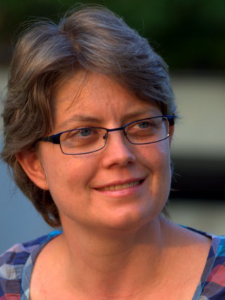
Muriel Bardor
Muriel Bardor, Université de Rouen Normandie, GlycoMEV lab
Tentative talk: Microalgae as a cell biofactory to produce antibodies in a sustainable and cost-effective way
After a European PhD on the N-glycosylation of recombinant antibodies produced in transgenic plants, Dr Muriel Bardor worked for 2 years on human glycosylation at the University of California San Diego, USA. From 2010 to 2012, she worked in Singapore (BTI Institute) as Head of the analytical group developing methodologies to characterize biosimilars produced in CHO cells. Since 2015, she has been a professor at the Université de Rouen Normandie, Laboratoire Glyco-MEV, where she optimizes the use of microalgae for the production of biologics. Over the course of her career, Muriel Bardor has developed a network of collaborations with companies such as Medicago Inc, Agilent Technologies, Samabriva, Lipofabrik and Virbac. Since the end of 2021, she has been co-founder and scientific director of the start-up ALGA BIOLOGICS, which produces antibodies from microalgae used as an innovative expression system.
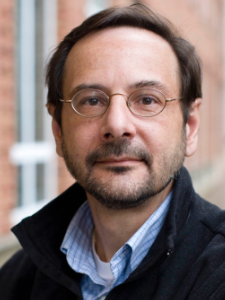
Giorgio Carta
University of Virginia, USA
Giorgio Carta is the Lawrence R. Quarles Professor at the University of Virginia. He received his Laurea in Chemical Engineering from the University of Cagliari, Italy, in 1980 and his PhD in Chemical Engineering from the University of Delaware in 1984. He has authored/co-authored more than 175 refereed journal articles, co-authored the first and second editions of the book “Protein Chromatography – Process Development and Scale-Up,” Wiley-VCH, 2010 and 2020, co-edited Section 16 “Adsorption and Ion Exchange” of Perry’s Chemical Engineers’ Handbook, McGraw-Hill, 7th, 8th, and 9th editions and authored the book “Heat and Mass Transfer for Chemical Engineers – Principles and Applications,” McGraw-Hill, 2021. He has served as the PREP Symposium Chair annually from 2009 through 2022. In addition to his university teaching, he has also been involved extensively in professional education and has been a consultant for a number of chemical and pharmaceutical companies. He is a Fellow of the American Institute of Chemical Engineers (AIChE) and of the International Adsorption Society (IAS).
Tentative talk: Detective Stories in Chromatography: the Inseparable Pair, the Missing Peak, and the Gang of Three
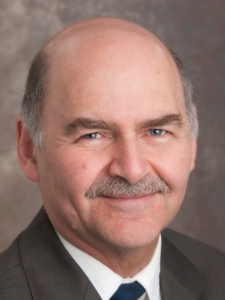
Abraham Lenhoff
Abraham Lenhoff, University of Delaware, USA
Abraham Lenhoff is the Allan P. Colburn Professor of the Department of Chemical and Biomolecular Engineering at the University of Delaware, where he has been on the faculty since 1984 and was Chair from 2012-7. His education was in chemical engineering at the University of Cape Town and the University of Wisconsin. His research is primarily on application of principles of thermodynamics, transport phenomena, biophysics and colloid science to protein separations and phase behavior.
Tentative talk: Understanding and Mitigating Persistence of CHO Host-Cell Proteins in Monoclonal Antibody Bioprocessing
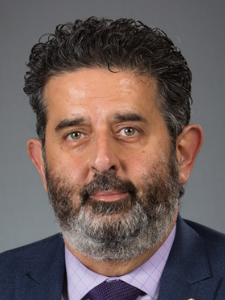
Yehia Mechref
Texas Tech University, USA
Dr. Yehia Mechref is Robert A Welch Endowed Chair in Chemistry, Paul W. Horn Distinguished Professor at Texas Tech University, an Associate Vice President for Research and Innovation, and the Director of the Center for Biotechnology and Genomics. Dr. Mechref is a world-renowned scientific leader in developing sensitive biomolecular mass spectrometry methods. He has published highly cited work, including 37 review articles, 23 book chapters, and 229 peer-reviewed research papers. He is the founding Editor-in-Chief of BioChem, and Associate Editor of Frontiers Oncology.
Tentative talk: MS-Based Glycomics and Glycoproteomics Enabling the Identification of Glycan and Glycopeptide Isomers as Biomarkers of Neurodegenerative Diseases
Pre-conference workshops:
Detailed Information on our Pre-conference workshops
Workshop 1
Sunday, November 5, 2023
9:30 am – 11:00 am
Magnetic separation in downstream processing
Sonja Berensmeier (TU Munich, Germany)
Sebastian Schwaminger (MedUni Graz, Austria)
Abstract
The separation of proteins and nucleic acids by means of magnetic separation is becoming increasingly important on a preparative scale. Especially cell separation and magnetic beads for protein and polynucleotide separation are the gold standard in academic labs. The great benefit of these beads is the simple handling which allows for one step processes in the purification of biomolecules. This increases the yield and reduces the costs as centrifugation, chromatography or filtration steps can be avoided.
Despite its high potential, today’s biochemical engineers are, for the most part, wholly unfamiliar with the topics of magnetism and magnetic separations, and are thus unable to recognise areas within bioprocessing where magnetically driven separations could be applied beneficially. Therefore, starting from physical concepts we shall describe the development of arguably the most powerful magnetic technique for bioprocessing, i.e. High Gradient Magnetic Separation (HGMS). Using case examples, we shall illustrate the applications of magnetic separation alongside with the processing technology which is necessary for the design of separators on small and large scale. The properties required for magnetic separators suitable for biotechnology, the ways in which HGMS processes can be operated, modelled and optimised, and finally identify the technique’s future prospects within the bioprocess industries.
The workshop is divided into two main topics. First, an overview of the particle systems used and important parameters for their use in various applications will be given. Second, different magnetic separators, their operation and their performance for different case studies will be presented.
Despite its high potential, today’s biochemical engineers are, for the most part, wholly unfamiliar with the topics of magnetism and magnetic separations, and are thus unable to recognise areas within bioprocessing where magnetically driven separations could be applied beneficially. Therefore, starting from physical concepts we shall describe the development of arguably the most powerful magnetic technique for bioprocessing, i.e. High Gradient Magnetic Separation (HGMS). Using case examples, we shall illustrate the applications of magnetic separation alongside with the processing technology which is necessary for the design of separators on small and large scale. The properties required for magnetic separators suitable for biotechnology, the ways in which HGMS processes can be operated, modelled and optimised, and finally identify the technique’s future prospects within the bioprocess industries.
The workshop is divided into two main topics. First, an overview of the particle systems used and important parameters for their use in various applications will be given. Second, different magnetic separators, their operation and their performance for different case studies will be presented.
Workshop 2
Sunday, November 5, 2023
11:15 am – 12:45 pm
Bioinformatics as a tool developing robust biotherapeutic proteins
Michel Eppink (Wageningen University, Netherlands)
Abstract
In silico predictions in the bioinformatics field is becoming more important for the development of new biopharmaceutical proteins preventing any issues with e.g. stability, aggregation, non-human sequences. Using in silico predictions in the early stage development of new biopharmaceutical proteins (e.g. monoclonal antibodies) would develop proteins that could overcome most of these issues and preventing delays during process development and clinical phase I studies.
By testing protein sequences in silico (e.g. structure, posttranslational modifications, aggregation, non-human sequences) anomalies can be found by comparing with databases and information based literature to find mistakes during in silico screening before starting process development work in the lab.
In this workshop example(s) will be given how to detect any anomalies in protein sequences that might affect the process development of the selected biopharmaceutical protein(s).
In this workshop example(s) will be given how to detect any anomalies in protein sequences that might affect the process development of the selected biopharmaceutical protein(s).
Workshop 3
Sunday, November 5, 2023
1:00 pm – 2:30 pm
Mechanistic understanding of biomolecules adsorption: theory and applications
C. Cabral (Univ. of Beira Interior, Portugal)
A. Jungbauer (BOKU, Austria)
A. Jungbauer (BOKU, Austria)
Abstract
The request for mechanistic understanding of processes has completely changed the paradigm of process development and process validation in biopharmaceutical manufacturing. For chromatographic separation processes the equilibrium binding conditions, also referred to as adsorption isotherms, are important to get a theoretical understanding on the maximum possible binding capacity and are the basis for mathematical description of the separation processes. In this pre-conference workshop, we will provide the theoretical basis and the state-of-the-art in experimental approaches to monitor biomolecule – surface interactions in order to better understand equilibrium binding conditions. The participants will be offered an overview of different techniques: conventional adsorption measurements with finite and infinite bath, fluorescence assays, Attenuated Total Reflectance Infrared Spectroscopy (ATR-FTIR), Differential Scanning Calorimetry (DSC), Isothermal Titration Calorimetry (ITC), Flow Microcalorimetry (FMC) and Small Angle X-ray scattering (SAX). Specific advantages and drawbacks for each of the techniques to shed light on biomolecule mechanism of adsorption will be discussed. Focus will be put on FMC and SAX, as two non-labeling techniques capable of simulating a dynamic chromatography system allowing online and in situ monitoring of the adsorptive process. Finally, we will cover present applications of these in situ monitoring techniques to better understand antibodies, peptides and polynucleotides separation by different types of chromatography highlighting current challenges as well as future opportunities.
Workshop 4
Sunday, November 5, 2023
2:45 pm – 4:15 pm
Poly-/Oligonucleotide separation in biopharmaceutical processing and their quality requirements
Sonja Berensmeier (TU Munich, Germany)
Michel Eppink (Byondis, The Netherlands)
Egbert Müller (Tosoh Bioscience, Germany)
Michel Eppink (Byondis, The Netherlands)
Egbert Müller (Tosoh Bioscience, Germany)
Abstract
Oligo- und Polynucleotide-based therapeutics such as single-stranded antisense siRNA and mRNA or double-stranded DNA plasmids have been investigated over the last decades and their promise as a new drug modality is now being realized. There has been tremendous development since the first antisense approach in living cells in 1978. The growing interest in nucleotide-based therapeutics is driven by the high potential of the treatments of a variety of medical conditions, the growing number of FDA-approved oligonucleotide drugs, and an increased focus on personalized medicine and on the development of therapies for rare diseases. The increased demand for nucleotide-based therapeutics requires a cost-effective and easy scale-up from research amounts to commercial needs. For separation, chromatographic methods and other non-conventional methods are discussed, whereby the different production processes have a significant impact. Moreover, from a quality perspective, the regulatory requirements will be discussed during the development of an oligonucleotide trajectory towards a commercial product.
